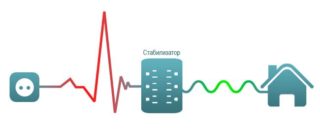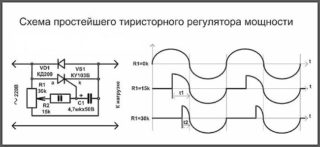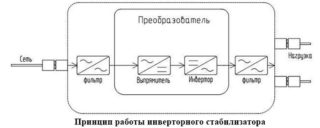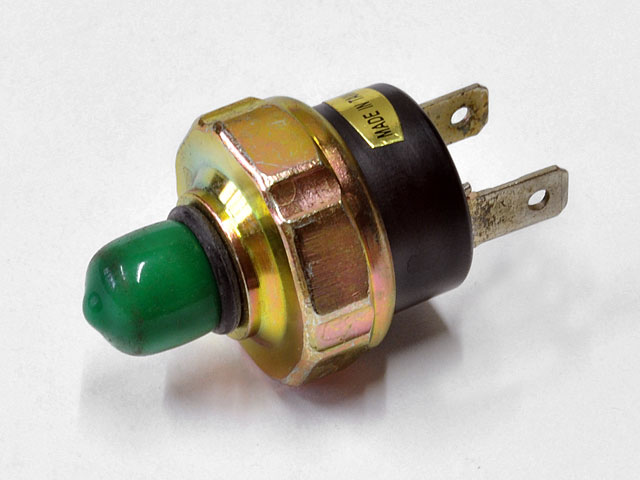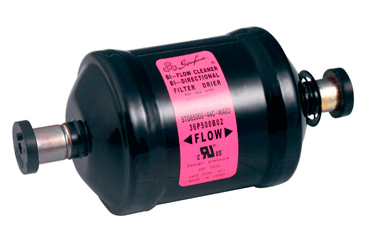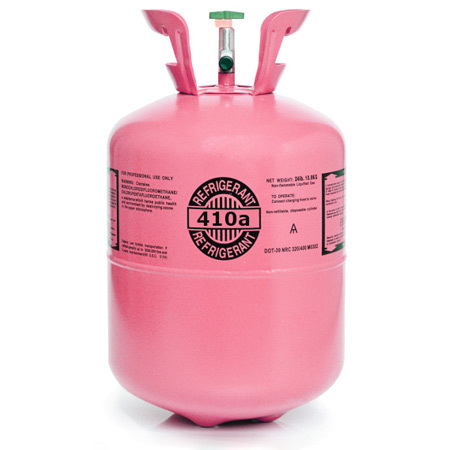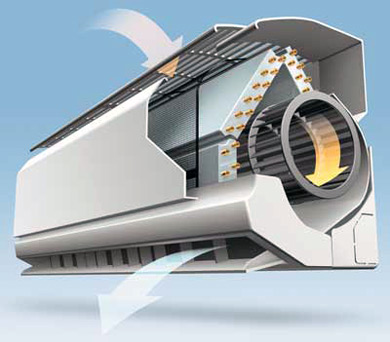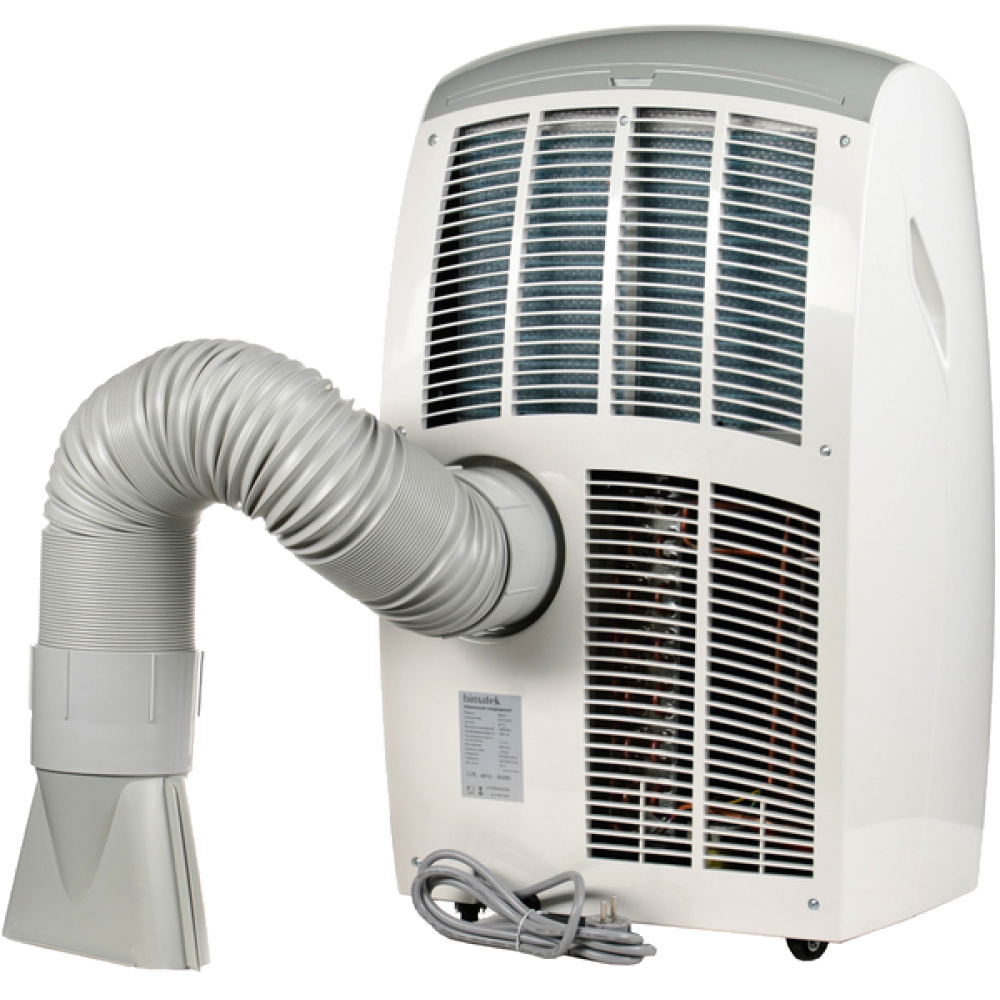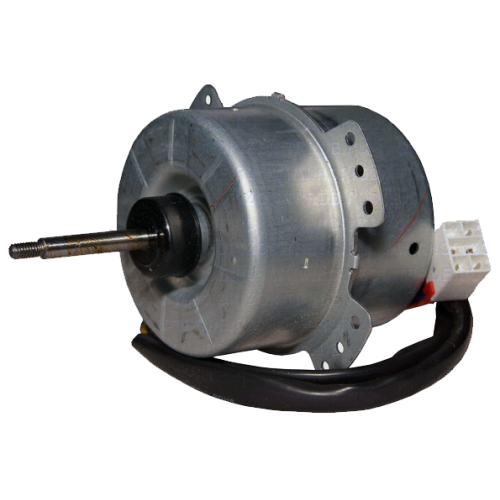Modern air conditioners are complex systems with electronic control units. The sensitive filling of split systems requires voltage stability. Oscillations to the smaller and larger side, arising in worn out power grids, lead to the breakdown of expensive components. To protect climatic equipment, it is worth connecting a voltage stabilizer for the air conditioner.
Why does an air conditioner need a stabilizer
- performing nearby welding works;
- insufficient power of the electric cable;
- connection of new consumers.
A voltage stabilizer is a device that converts electrical energy to provide voltage at the output within specified limits.
The device works automatically, smoothing out energy surges. It protects the electronic module from low and high voltage, zero phase burnout effects. Installation of the device in country houses and rural areas is especially relevant.
Selecting the type of stabilizer for the air conditioner
At the first stage of choosing a voltage stabilizer for an air conditioner, it is necessary to determine the type of device. The main criteria of the device:
- accuracy of current indicators adjustment;
- the number of phases (one or three), the three-phase device is configured for operation in single-phase mode;
- speed of response;
- power.
Relay devices

Devices are widely used due to the optimal ratio of performance and cost. Components of the structure: power transformer and electronic control unit. The addition of volts occurs when switching between different windings of the transformer. The process is carried out using a relay. The current is adjusted in steps, the output voltage increases gradually.
Pluses of relay devices:
- compact size;
- low noise;
- the ability to change parameters from 100 to 280 V.
Minuses:
- step voltage increase;
- the probability of relay breakage;
- error up to 8%.
Electromechanical devices
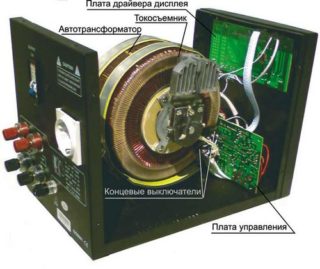
Adjustment occurs by moving the turns of the toroidal coil. The rate of change of parameters is limited by the capabilities of the motor that moves the brush. Device error 2-3%.
Advantages:
- smooth adjustment;
- affordable price;
- accuracy of parameters.
Disadvantages:
- noise during work;
- wear of mechanical moving parts;
- response speed is 5 times less than that of a relay device.
Thyristor devices
To increase the voltage, the thyristors add several turns to the work, when lowering, part of the winding is turned off.
A feature of the devices is strong heating during operation.
Pluses of thyristor (triac) devices:
- stabilization accuracy of indicators 2-5%;
- low noise level;
- minimum power consumption;
- high speed of response.
Minuses:
- the microcontroller can slow down when the current supply is unstable;
- step adjustment;
- high cost of devices.
Inverter converters
Storage capacitors allow you to deliver stable power parameters regardless of power surges.
Pluses of an inverter stabilizer:
- silent work;
- input voltage range 115-300 V;
- accuracy of adjustment.
Disadvantages:
- high price.
Low and medium price stabilizers are rarely equipped with overvoltage protection. In the event of a short circuit, it will not be able to regulate the current and will burn out. When choosing a device, all its characteristics are specified. It is possible to connect a special relay that monitors the voltage after the stabilizer.
By the type of installation, devices are wall-mounted and floor-standing. The first option is compact, convenient for placement in an apartment. Floor standing models are more bulky, but their cost is lower. This is the best choice for a spacious private home.
Selecting the power of the voltage regulator
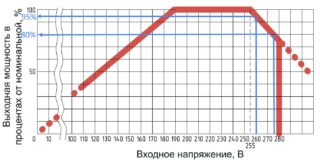
The stabilizer for the split system is selected according to the full power of the climatic technology. It includes active and reactive power. The value is measured in VA (volt-ampere). The parameter is calculated by the formula:
N = Nnom. / Cos, where
Nom. - the power of the air conditioner, indicated in the characteristics;
cos is the coefficient of the reactive component.
For example, Nnom. = 1600 W, cos = 0.85
N = 1600 / 0.85 = 1882 VA
The devices are capable of providing a voltage of 220 V with an accuracy of 5-8% with input parameters in the range from 105 to 280 V. The smaller the error, the more reliably the sensitive electronics are protected. When choosing the load capacity of the device, take into account the starting currents of the air conditioner, which briefly increase several times. Also pay attention to the amplitude of the voltage fluctuation and the power factor.
One of the factors requiring a performance reserve is an increase in energy consumption. During operation, the air conditioner becomes dirty with dust, the viscosity of the oil increases. The growth in electricity consumption provokes changes in conditions - high temperature, humidity.
The purchase of a voltage regulator with a power reserve increases the reliability of the system. The only drawback is that such a device is more expensive.
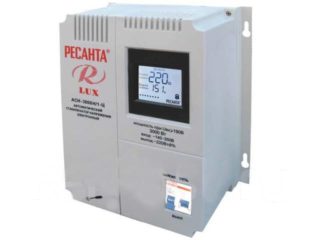
When the voltage drops, the power of the stabilizer decreases. Depending on the model, at 160 V, it outputs 80-60% of the declared power. Therefore, in case of significant deviations in the indicators of the electrical network, it is recommended to purchase a device with a 30-40% power reserve.
Changes in the rated voltage are common - a situation against which it is worth insuring HVAC equipment. Premium air conditioners are equipped with a stabilizer during assembly. For the rest of the equipment, prudent owners buy the devices themselves.
Connecting a voltage stabilizer will prevent damage to electronics and electric motors. Free repairs at the service center do not apply to such breakdowns.
The most common version of a stabilizer for an air conditioner is a 3 kW single-phase device.

